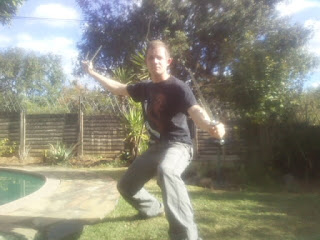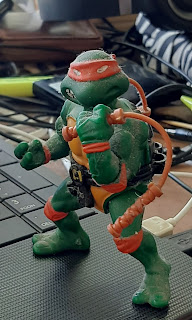The Staff- not patented
Now that I have written about some weapons that do not seem to make any sense in actual combat, let's look at something simple. In fact- this weapon is so simple that I am not even going to write anything about its history. Just about every civilisation in history had this weapon. The only difference that we may find is the techniques used from people to people. While Chinese forms are famous for their spectacular staff movements we find that the forms taught by the Okinawan and Japanese schools used more direct and pragmatic movements. The Quarterstaff that we know from our medieval stories was the Western version of this universal weapon. The main reason why one would want to use such a long stick for a weapon is reach. A staff has longer reach than most swords, definitely more reach than a knife or dagger and also more reach than most blunt weapons that we know. That means that you don't really have to know any special defensive...


